Neues von der Artemis 1 - Mission:
Wed, 13 Sep 2023 15:54:09 +0000
Artemis
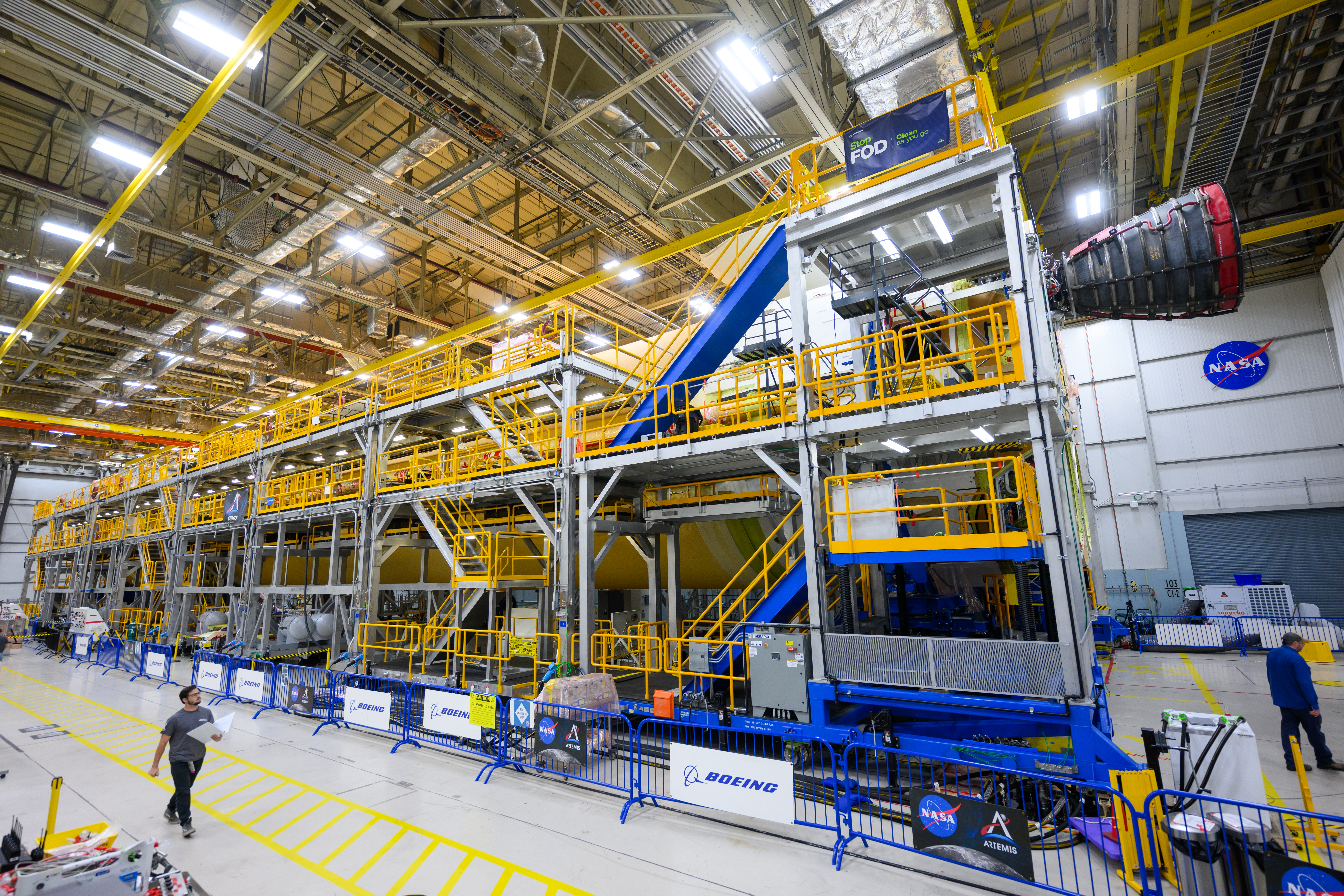 Engineers and technicians from Aerojet Rocketdyne and Boeing at NASA’s Michoud Assembly Facility in New Orleans have installed the first of four RS-25 engines to the core stage for NASA’s Space Launch System rocket that will help power the first crewed Artemis mission to the Moon. The yellow core stage is seen in a horizontal position in the final assembly area at Michoud. One RS-25 engine, engine number E2059, has been installed in the top left corner at the base of the 212-foot-tall core stage. Photo credit: NASA
Engineers and technicians from Aerojet Rocketdyne and Boeing at NASA’s Michoud Assembly Facility in New Orleans have installed the first of four RS-25 engines to the core stage for NASA’s Space Launch System rocket that will help power the first crewed Artemis mission to the Moon. The yellow core stage is seen in a horizontal position in the final assembly area at Michoud. One RS-25 engine, engine number E2059, has been installed in the top left corner at the base of the 212-foot-tall core stage. Photo credit: NASA
Technicians at NASA’s Michoud Assembly Facility in New Orleans have installed the first of four RS-25 engines on the core stage of the agency’s SLS (Space Launch System) rocket that will help power NASA’s first crewed Artemis mission to the Moon. During Artemis II, NASA astronauts Reid Wiseman, Victor Glover, Christina Koch, and CSA (Canadian Space Agency) astronaut Jeremy Hansen will launch on SLS and journey around the Moon inside the Orion spacecraft during an approximately 10-day mission in preparation for future lunar missions.
The Sept. 11 engine installation follows the joining of all five major structures that make up the SLS core stage earlier this spring. NASA, lead RS-25 engines contractor Aerojet Rocketdyne, an L3 Harris Technologies company, and Boeing, the core stage lead contractor, will continue integrating the remaining three engines into the stage and installing the propulsion and electrical systems within the structure.
All four RS-25 engines are located at the base of the core stage within the engine section, which protects the engines from the extreme temperatures during launch and has an aerodynamic boat tail fairing to channel airflow. During launch and flight, the four engines will fire nonstop for over eight minutes, consuming propellant from the core stage’s two massive propellant tanks at a rate of 1,500 gallons (5,678 liters) per second.
Each SLS engine has a different serial number. The serial number for the engine installed Sept. 11 in position two on the core stage is E2059. It along with the engine in position one, E2047, previously flew on space shuttle flights. E2047 is the most veteran engine of the entire set flying on Artemis II with 15 shuttle flights, including STS-98, which delivered the Destiny Laboratory Module to the International Space Station in 2001. The engines installed in positions three and four (E2062 and E2063) are new engines that include previously flown hardware.
NASA is working to land the first woman and first person of color on the Moon under Artemis. SLS is part of NASA’s backbone for deep space exploration, along with Orion and the Gateway in orbit around the Moon, and commercial human landing systems. SLS is the only rocket that can send Orion, astronauts, and supplies to the Moon in a single mission.
For more on NASA SLS visit:
Siehe auch die Originalnachricht:
First RS-25 Engine Installed to NASA’s Artemis II Moon Rocket – Artemis

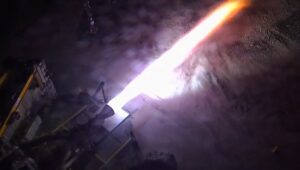 The 281-second throttle test demonstrated the engine’s ability to meet the demands of a descent burn to the lunar surface. Credit: SpaceX
The 281-second throttle test demonstrated the engine’s ability to meet the demands of a descent burn to the lunar surface. Credit: SpaceX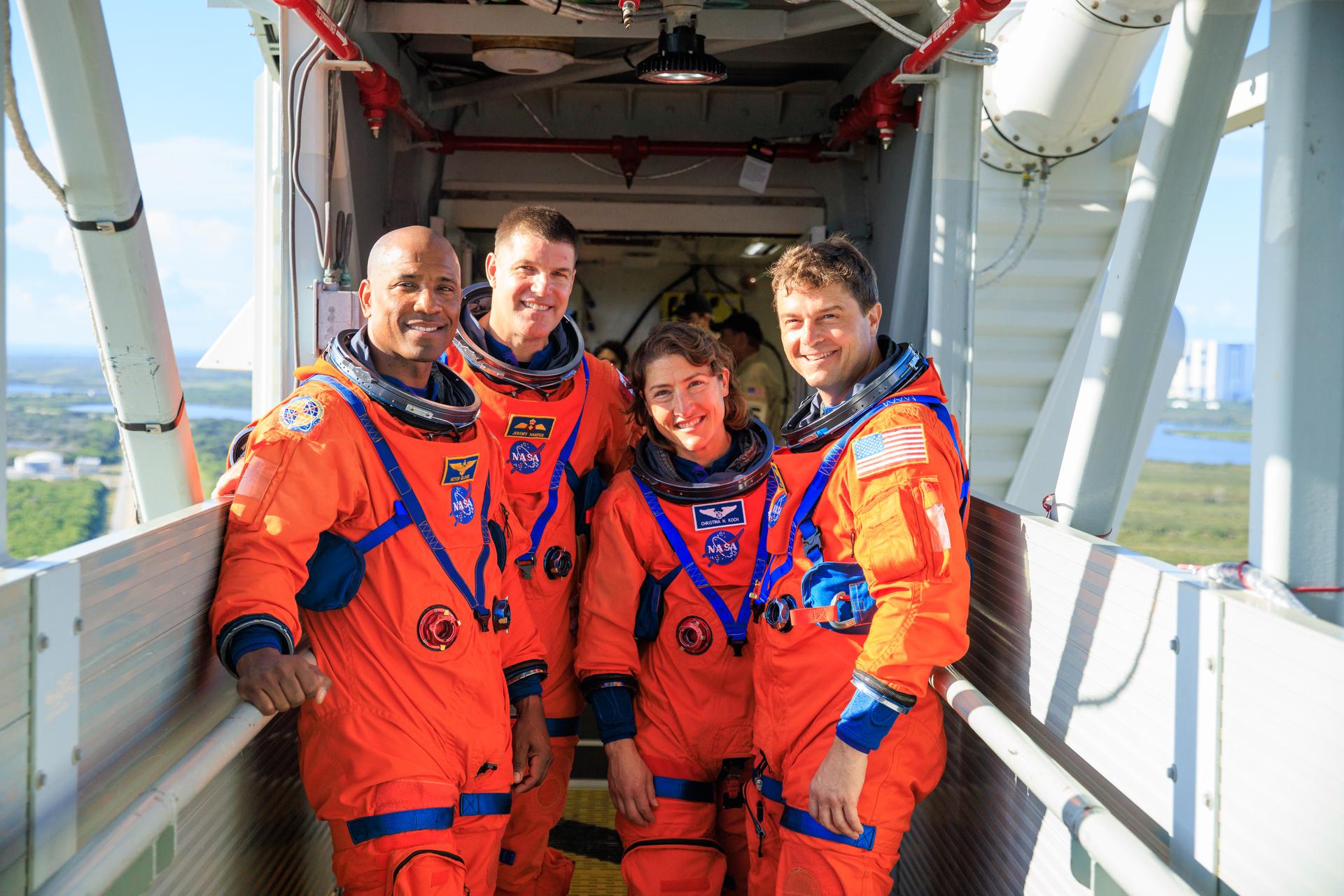 Artemis II astronauts, from left, NASA astronaut Victor Glover (left), CSA (Canadian Space Agency) astronaut Jeremy Hansen, NASA astronauts Christina Koch and Reid Wiseman stand on the crew access arm of the mobile launcher at Launch Pad 39B as part of an integrated ground systems test at Kennedy Space Center in Florida on Wednesday, Sept. 20. The test ensures the ground systems team is ready to support the crew timeline on launch day. Photo Credit: NASA/Frank Michaux
Artemis II astronauts, from left, NASA astronaut Victor Glover (left), CSA (Canadian Space Agency) astronaut Jeremy Hansen, NASA astronauts Christina Koch and Reid Wiseman stand on the crew access arm of the mobile launcher at Launch Pad 39B as part of an integrated ground systems test at Kennedy Space Center in Florida on Wednesday, Sept. 20. The test ensures the ground systems team is ready to support the crew timeline on launch day. Photo Credit: NASA/Frank Michaux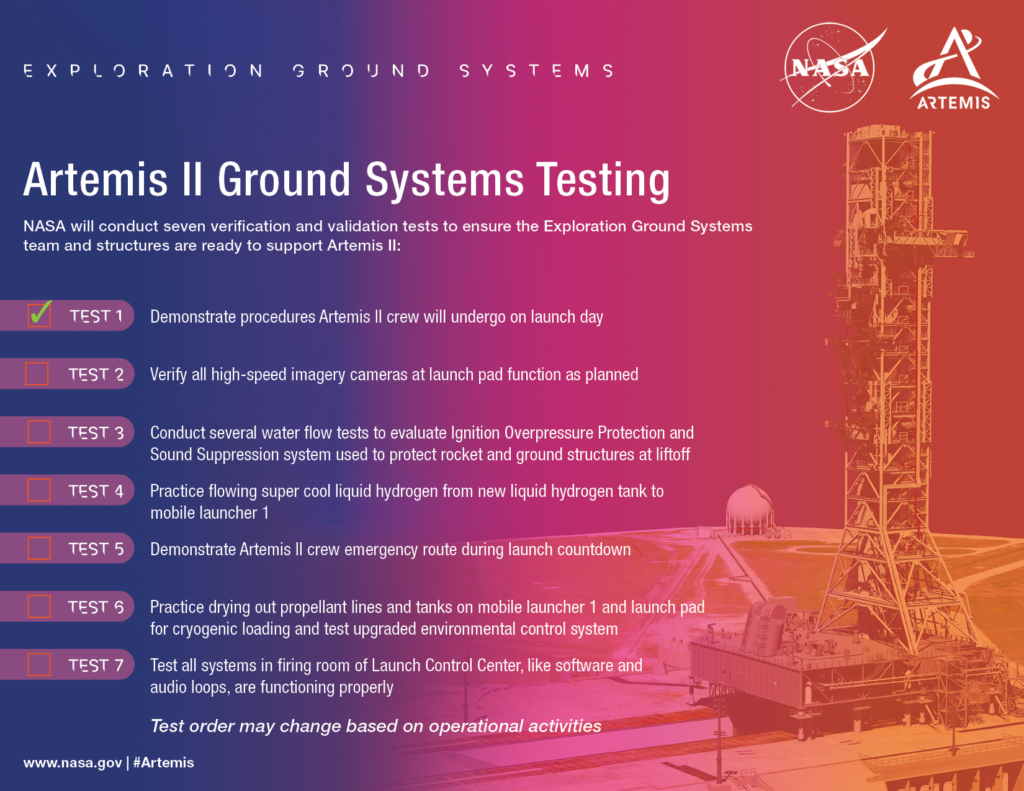 Credits: NASA
Credits: NASA
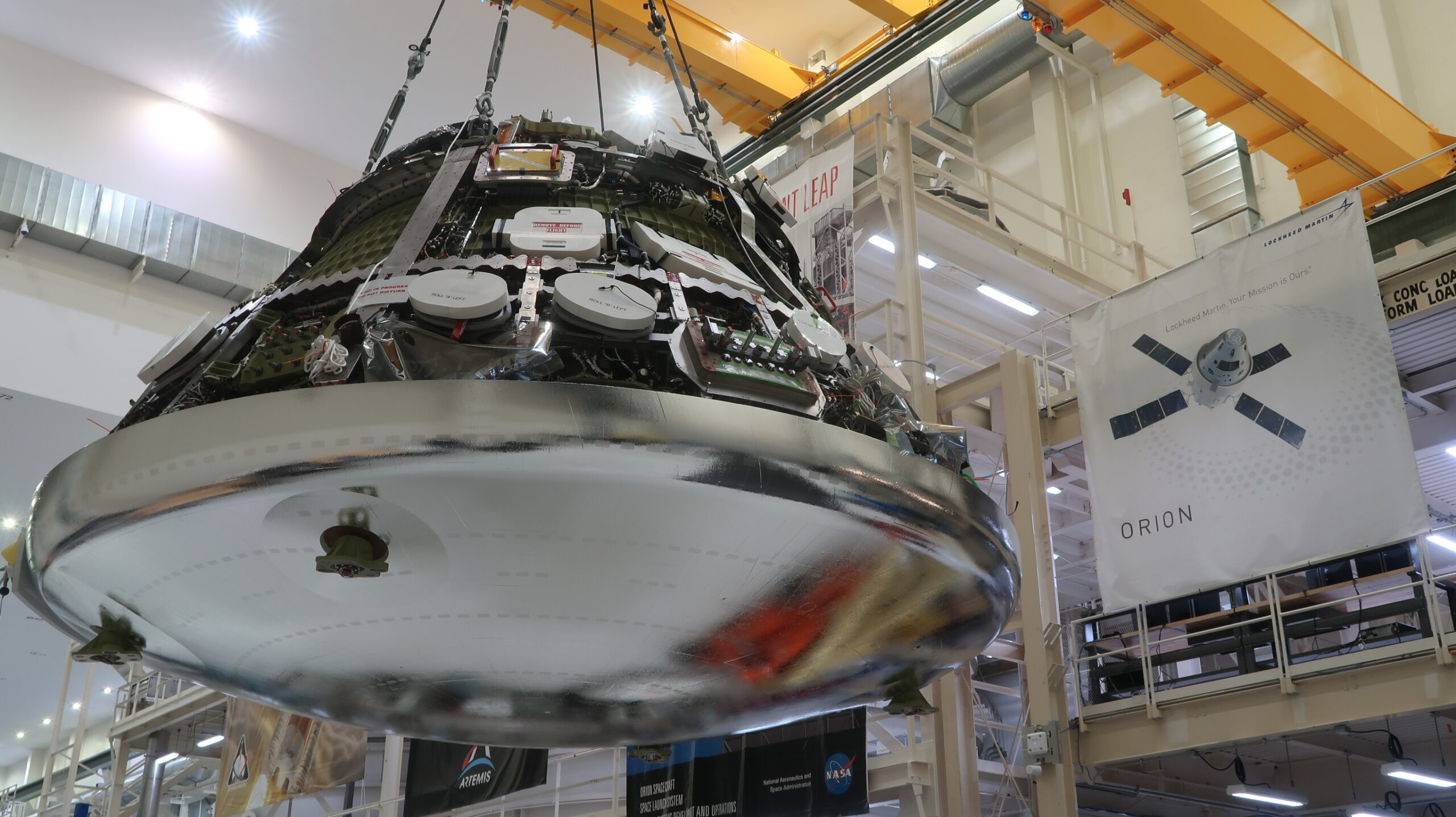 Intergration of the crew and service modules for the Artemis II Orion spacecraft was recently completed at NASA’s Kennedy Space Center in Florida. Photo credit: NASA
Intergration of the crew and service modules for the Artemis II Orion spacecraft was recently completed at NASA’s Kennedy Space Center in Florida. Photo credit: NASA Teams with Astrobotic install the NASA meatball decal on Astrobotic’s Peregrine lunar lander on Tuesday, Nov. 14, 2023, at the Astrotech Space Operations Facility near the agency’s Kennedy Space Center in Florida. Peregrine will launch onboard a United Launch Alliance Vulcan rocket targeted for no earlier than Dec. 24, 2023, from Launch Complex 41 at Cape Canaveral Space Force Station in Florida. The lander will carry a suite of NASA payloads to the Moon as part of the agency’s CLPS (Commercial Lunar Payload Services) initiative and Artemis program. Photo credit: NASA/Isaac Watson
Teams with Astrobotic install the NASA meatball decal on Astrobotic’s Peregrine lunar lander on Tuesday, Nov. 14, 2023, at the Astrotech Space Operations Facility near the agency’s Kennedy Space Center in Florida. Peregrine will launch onboard a United Launch Alliance Vulcan rocket targeted for no earlier than Dec. 24, 2023, from Launch Complex 41 at Cape Canaveral Space Force Station in Florida. The lander will carry a suite of NASA payloads to the Moon as part of the agency’s CLPS (Commercial Lunar Payload Services) initiative and Artemis program. Photo credit: NASA/Isaac Watson Ahead of launch as part of NASA’s Commercial Lunar Payload Services (CLPS) initiative, Astrobotic’s Peregrine lunar lander is preparing to be encapsulated in the payload fairing, or nose cone, of United Launch Alliance’s Vulcan rocket on Nov. 21, 2023, at Astrotech Space Operations Facility near the agency’s Kennedy Space Center in Florida. Launch of Astrobotic’s Peregrine Mission One will carry NASA and commercial payloads to the Moon in early 2024 to study the lunar exosphere, thermal properties, and hydrogen abundance of the lunar regolith, magnetic fields, and the radiation environment of the lunar surface. Photo credit: United Launch Alliance
Ahead of launch as part of NASA’s Commercial Lunar Payload Services (CLPS) initiative, Astrobotic’s Peregrine lunar lander is preparing to be encapsulated in the payload fairing, or nose cone, of United Launch Alliance’s Vulcan rocket on Nov. 21, 2023, at Astrotech Space Operations Facility near the agency’s Kennedy Space Center in Florida. Launch of Astrobotic’s Peregrine Mission One will carry NASA and commercial payloads to the Moon in early 2024 to study the lunar exosphere, thermal properties, and hydrogen abundance of the lunar regolith, magnetic fields, and the radiation environment of the lunar surface. Photo credit: United Launch Alliance On Friday, Jan. 5, 2024, United Launch Alliance’s Vulcan rocket carrying Astrobotic’s Peregrine lunar lander is rolled out of the Vertical Integration Facility to the launch pad at Space Launch Complex 41 on Cape Canaveral Space Force Station in Florida in advance of a planned lift off at 2:18 a.m. EST Monday, Jan. 8, 2024. Astrobotic’s Peregrine Mission One will carry NASA and commercial payloads to the Moon to study the lunar exosphere, thermal properties, and hydrogen abundance of the lunar regolith, magnetic fields, and the radiation environment of the lunar surface. Photo credit: NASA/Cory Huston
On Friday, Jan. 5, 2024, United Launch Alliance’s Vulcan rocket carrying Astrobotic’s Peregrine lunar lander is rolled out of the Vertical Integration Facility to the launch pad at Space Launch Complex 41 on Cape Canaveral Space Force Station in Florida in advance of a planned lift off at 2:18 a.m. EST Monday, Jan. 8, 2024. Astrobotic’s Peregrine Mission One will carry NASA and commercial payloads to the Moon to study the lunar exosphere, thermal properties, and hydrogen abundance of the lunar regolith, magnetic fields, and the radiation environment of the lunar surface. Photo credit: NASA/Cory Huston
 Credits: NASA
Credits: NASA A SpaceX Falcon 9 rocket carrying Intuitive Machines’ Nova-C lunar lander lifts off from Launch Pad 39A at NASA’s Kennedy Space Center in Florida at 1:05 a.m. EST on Thursday, Feb. 15, 2024. As part of NASA’s CLPS (Commercial Lunar Payload Services) initiative and Artemis campaign, Intuitive Machines’ first lunar mission will carry NASA science and commercial payloads to the Moon to study plume-surface interactions, space weather/lunar surface interactions, radio astronomy, precision landing technologies, and a communication and navigation node for future autonomous navigation technologies. Photo credit: Mike Chambers
A SpaceX Falcon 9 rocket carrying Intuitive Machines’ Nova-C lunar lander lifts off from Launch Pad 39A at NASA’s Kennedy Space Center in Florida at 1:05 a.m. EST on Thursday, Feb. 15, 2024. As part of NASA’s CLPS (Commercial Lunar Payload Services) initiative and Artemis campaign, Intuitive Machines’ first lunar mission will carry NASA science and commercial payloads to the Moon to study plume-surface interactions, space weather/lunar surface interactions, radio astronomy, precision landing technologies, and a communication and navigation node for future autonomous navigation technologies. Photo credit: Mike Chambers